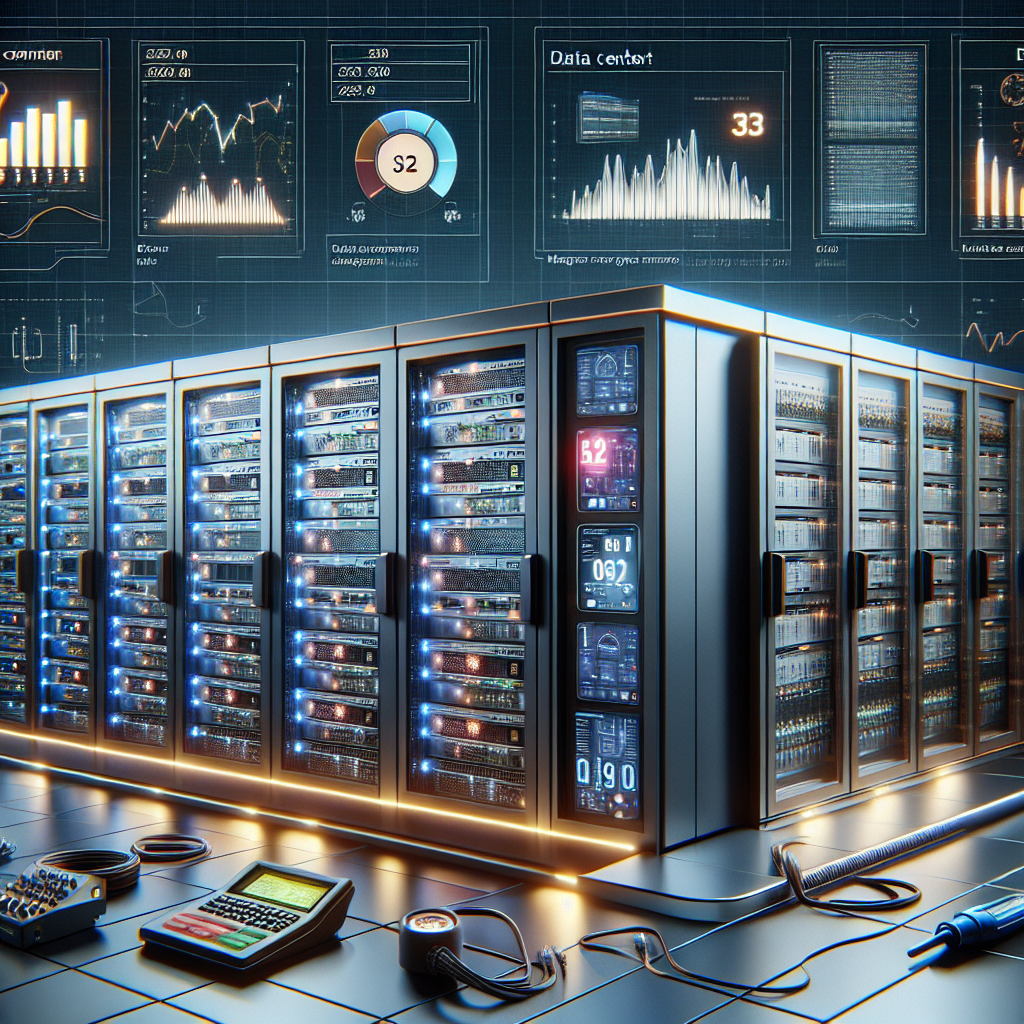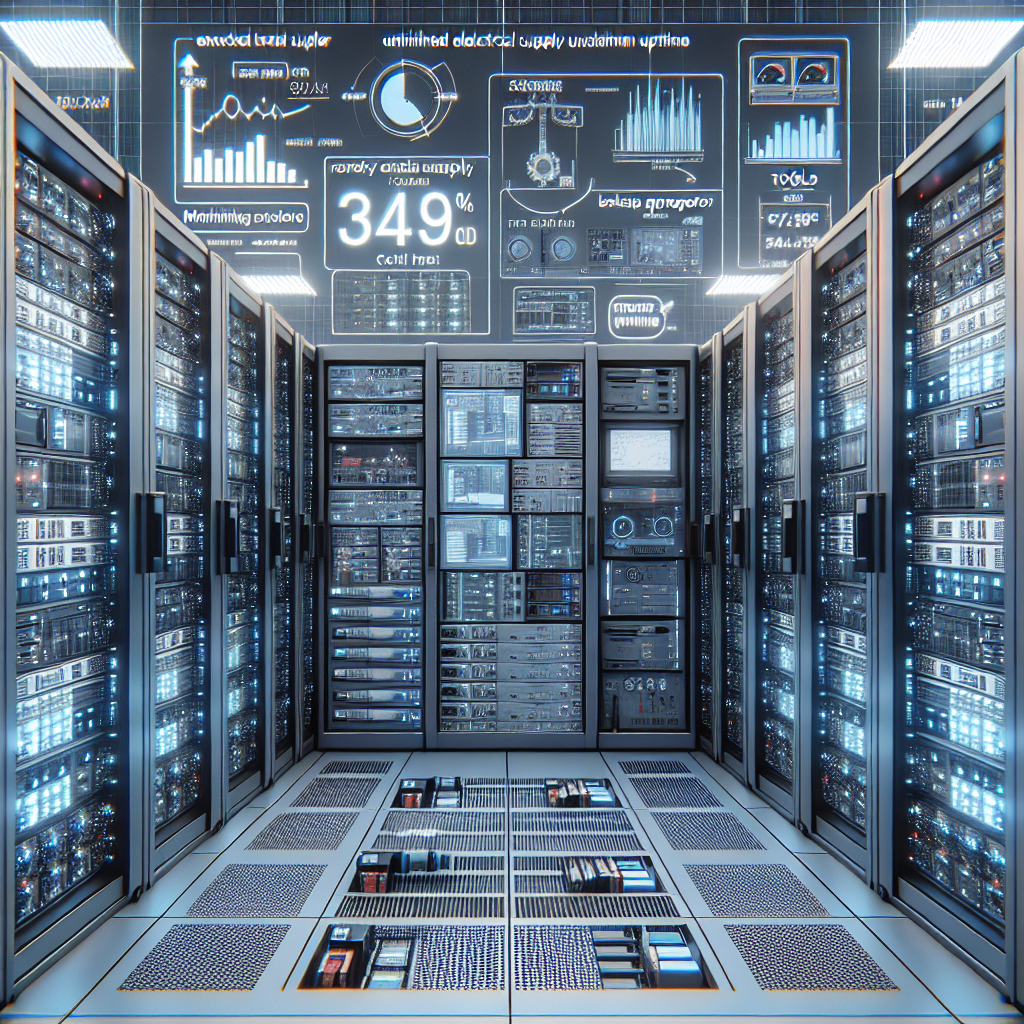Your cart is currently empty!
Tag: Tools

Measuring and Monitoring Data Center Energy Usage: Tools and Techniques
Data centers are crucial for the operation of countless businesses and organizations around the world. However, they also consume a significant amount of energy, making them a major contributor to carbon emissions and environmental impact. In order to reduce energy usage and improve efficiency, it is essential to measure and monitor data center energy usage.There are several tools and techniques available to help data center operators track and analyze energy consumption. These tools can provide valuable insights into where energy is being used, identify areas for improvement, and ultimately lead to cost savings and a reduced carbon footprint.
One common tool for measuring and monitoring data center energy usage is a power meter. Power meters are devices that measure the amount of electricity being consumed by various components of the data center, such as servers, cooling systems, and lighting. By monitoring power usage in real-time, data center operators can identify trends and anomalies that may indicate inefficiencies or opportunities for optimization.
Another useful tool for measuring data center energy usage is a data center infrastructure management (DCIM) system. DCIM systems collect and analyze data from various sensors and monitoring devices throughout the data center, providing a comprehensive view of energy usage and efficiency. These systems can help operators identify opportunities for consolidation, virtualization, and other strategies to reduce energy consumption.
In addition to tools, there are also several techniques that can help data center operators measure and monitor energy usage. One common technique is the use of key performance indicators (KPIs) to track energy efficiency metrics, such as power usage effectiveness (PUE) and carbon usage effectiveness (CUE). By regularly monitoring these KPIs, data center operators can identify areas for improvement and set goals for reducing energy consumption.
Another technique for measuring and monitoring data center energy usage is energy audits. Energy audits involve a thorough examination of the data center’s infrastructure, equipment, and operations to identify opportunities for energy savings. By conducting regular energy audits, data center operators can uncover hidden inefficiencies and implement targeted solutions to reduce energy usage.
Overall, measuring and monitoring data center energy usage is essential for improving efficiency, reducing costs, and minimizing environmental impact. By using tools such as power meters and DCIM systems, and employing techniques like KPI tracking and energy audits, data center operators can gain valuable insights into their energy consumption and take steps to optimize their operations. By making energy efficiency a priority, data centers can not only reduce their environmental footprint but also improve their bottom line.

Measuring and Monitoring Data Center Uptime: Metrics and Tools
Data centers play a crucial role in today’s digital age, serving as the backbone for countless businesses and organizations. It is essential for data centers to maintain high levels of uptime to ensure continuous operation and availability of critical systems and applications. Measuring and monitoring data center uptime is key to ensuring optimal performance and reliability. In this article, we will explore the metrics and tools used to measure and monitor data center uptime.Metrics for Measuring Data Center Uptime:
1. Uptime Percentage: One of the most common metrics used to measure data center uptime is the uptime percentage. This metric represents the percentage of time that a data center is operational and available. For example, a data center with a 99.9% uptime guarantee is expected to be operational 99.9% of the time in a given period.
2. Mean Time Between Failures (MTBF): MTBF is a metric that measures the average time between failures in a data center. It provides insights into the reliability of data center equipment and helps in identifying areas for improvement to reduce downtime.
3. Mean Time to Repair (MTTR): MTTR measures the average time it takes to repair and restore services after a failure occurs in the data center. A lower MTTR indicates quicker recovery times and better operational efficiency.
4. Service Level Agreements (SLAs): SLAs are contractual agreements between data center providers and customers that define the level of uptime and performance guaranteed by the provider. SLAs typically include uptime guarantees, response times for issue resolution, and penalties for failing to meet agreed-upon service levels.
Tools for Monitoring Data Center Uptime:
1. Data Center Infrastructure Management (DCIM) Software: DCIM software provides real-time visibility into data center infrastructure, including power consumption, temperature, and equipment health. It helps data center operators monitor and manage critical systems to ensure uptime and efficiency.
2. Network Monitoring Tools: Network monitoring tools monitor the performance and health of network infrastructure, including servers, switches, and routers. These tools provide insights into network traffic, bandwidth utilization, and potential issues that could impact data center uptime.
3. Environmental Monitoring Sensors: Environmental monitoring sensors measure temperature, humidity, and airflow within the data center to ensure optimal operating conditions. Monitoring environmental factors helps prevent equipment overheating and potential downtime due to environmental issues.
4. Alerting and Notification Systems: Alerting and notification systems provide real-time alerts and notifications for critical events and issues in the data center. These systems help data center operators respond quickly to incidents and minimize downtime.
In conclusion, measuring and monitoring data center uptime is essential for ensuring the reliability and performance of critical systems and applications. By utilizing the right metrics and tools, data center operators can proactively monitor and manage uptime, identify potential issues, and ensure continuous operation of data center infrastructure. Investing in robust monitoring solutions and best practices is key to achieving high levels of uptime and meeting customer expectations for availability and reliability.

The Ultimate Guide to Server Maintenance: Key Tasks and Tools for IT Professionals
Server maintenance is a crucial aspect of IT management that ensures the smooth operation of a company’s network infrastructure. Without proper maintenance, servers can suffer from performance issues, security vulnerabilities, and even complete system failures. To prevent these issues and keep servers running at peak performance, IT professionals need to perform regular maintenance tasks and utilize the right tools.In this ultimate guide to server maintenance, we will outline key tasks IT professionals should perform to keep servers running smoothly, as well as highlight essential tools that can help streamline the maintenance process.
Key Tasks for Server Maintenance
1. Monitoring Server Performance: Regularly monitoring server performance is essential to identify any potential issues before they escalate. IT professionals should use monitoring tools to track server CPU usage, memory usage, disk space, and network traffic. By monitoring performance metrics, IT professionals can proactively address any performance bottlenecks and ensure servers are running efficiently.
2. Patch Management: Keeping servers up-to-date with the latest security patches is crucial to protect against vulnerabilities and cyber threats. IT professionals should regularly check for and apply software updates and patches to servers to ensure they are protected against potential security risks.
3. Backup and Disaster Recovery: Regularly backing up server data is essential to prevent data loss in the event of a system failure or cyber attack. IT professionals should implement a robust backup and disaster recovery plan to ensure that critical data is protected and can be quickly restored in case of an emergency.
4. Server Optimization: Optimizing server settings and configurations can help improve performance and efficiency. IT professionals should regularly review server configurations and make necessary adjustments to ensure servers are running at peak performance.
5. Security Audits: Conducting regular security audits can help identify and address security vulnerabilities in servers. IT professionals should perform security scans and penetration tests to identify weaknesses in server security and implement necessary security measures to protect against potential threats.
Essential Tools for Server Maintenance
1. Monitoring Tools: Tools like Nagios, Zabbix, and SolarWinds allow IT professionals to monitor server performance metrics in real-time and receive alerts for any potential issues.
2. Patch Management Tools: Tools like Microsoft WSUS and SolarWinds Patch Manager can help IT professionals automate the patch management process and ensure servers are up-to-date with the latest security patches.
3. Backup and Recovery Tools: Tools like Veeam Backup & Replication and Acronis Backup can help IT professionals automate server backups and streamline the disaster recovery process.
4. Security Audit Tools: Tools like Nessus, Qualys, and OpenVAS can help IT professionals conduct security audits and identify vulnerabilities in servers.
By performing regular server maintenance tasks and utilizing the right tools, IT professionals can ensure servers are running smoothly, secure, and efficient. Investing in server maintenance is essential to prevent downtime, data loss, and security breaches, ultimately saving time and resources in the long run.

A Comprehensive Guide to Data Center Monitoring Tools and Best Practices
Data centers are the backbone of modern businesses, housing critical IT infrastructure and applications that are essential for operations. Monitoring the performance and health of data centers is crucial to ensure smooth operations and prevent downtime. With the increasing complexity of data centers and the growing volume of data being processed, having the right monitoring tools and best practices in place is essential.Data center monitoring tools are software solutions that allow IT administrators to keep a close eye on the performance, availability, and security of the data center infrastructure. These tools provide real-time visibility into key metrics such as server health, network traffic, storage capacity, and application performance. With the right monitoring tools in place, IT teams can proactively identify and address issues before they impact business operations.
There are many data center monitoring tools available on the market, each offering a unique set of features and capabilities. Some popular tools include Nagios, Zabbix, SolarWinds, and PRTG Network Monitor. These tools offer a range of monitoring capabilities, from simple server monitoring to more advanced network and application monitoring.
When selecting a data center monitoring tool, it’s important to consider the specific needs and requirements of your organization. Some key factors to consider include scalability, ease of use, integration with existing systems, and cost. It’s also important to ensure that the monitoring tool provides comprehensive coverage of all aspects of the data center infrastructure, including servers, storage, networking, and applications.
In addition to selecting the right monitoring tool, it’s also important to establish best practices for data center monitoring. Some key best practices include:
1. Define monitoring objectives: Before implementing a monitoring tool, it’s important to clearly define the objectives and goals of data center monitoring. This will help ensure that the monitoring tool is aligned with the organization’s overall IT strategy.
2. Monitor key metrics: Identify the key performance indicators (KPIs) that are critical to the operation of the data center, such as server uptime, network latency, and application response time. Monitoring these metrics will help IT teams quickly identify and address issues.
3. Set up alerts and notifications: Configure the monitoring tool to send alerts and notifications when a predefined threshold is exceeded. This will help IT teams proactively address issues before they impact business operations.
4. Regularly review and analyze data: Regularly review monitoring data to identify trends and patterns that may indicate potential issues. Analyzing this data will help IT teams make informed decisions and optimize the performance of the data center infrastructure.
5. Implement a disaster recovery plan: In the event of a data center outage or failure, it’s important to have a comprehensive disaster recovery plan in place. This plan should outline the steps to take to restore operations and minimize downtime.
By implementing the right data center monitoring tools and following best practices, organizations can ensure the performance, availability, and security of their data center infrastructure. With real-time visibility into key metrics and proactive monitoring, IT teams can quickly identify and address issues, ultimately improving the overall reliability and efficiency of the data center.
